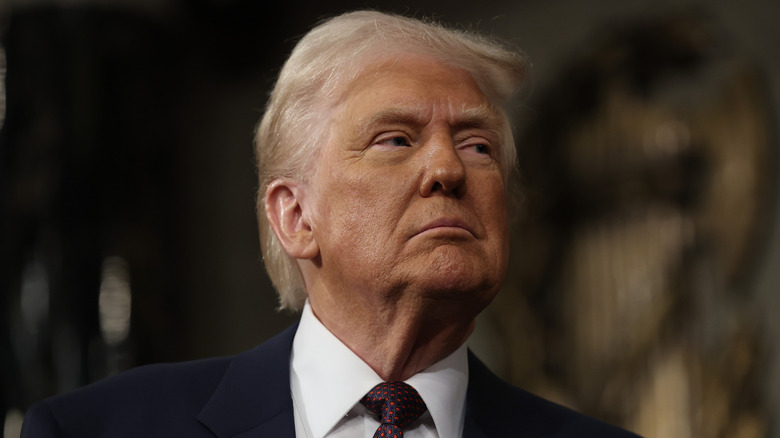What Donald Trump's Education Department Cuts Mean For Your Student Loans
Donald Trump has often talked about getting rid of the U.S. Department of Education because he deduces it will save money and reduce the government's involvement. He made this known in part at a campaign event held on March 13, 2023. This event, known as the "America First Education Policy Speech," took place at the Adler Theatre in Davenport, Iowa. He said, according to CNN, "We're going to end the Department of Education...it's a disaster. We're cutting costs, and we're sending education back to the states."
Trump's ideas are all about cutting what he calls "unnecessary bureaucracy." He believes that states and private lenders could finance education better. But, not everyone's on board. Firstly, because states might not have enough cash to keep the grants as generous as they are now. This could lead to smaller grants or tougher rules for who can get them, pushing more students to take out loans to cover their education costs.
Critics are sounding alarms that this could shake up the well-oiled machine that oversees $1.6 trillion in federal student loans. Wiping out the department might throw a wrench in the works for federal aid and loans, as well as impact the programs overseen by the U.S. Department of Education.
Specific programs at risk
Donald Trump's plan to shut down the Department of Education could spell trouble for some key student aid programs. For example, Pell Grants. These help over 6 million students with low incomes every year. But these grants need federal dollars to work, and Trump wants to cut that funding. Trump's 2025 budget proposal puts the Public Service Loan Forgiveness (PSLF) program in the crosshairs, arguing that it favors higher-earning professionals like lawyers and doctors more than lower-paid public sector workers.
The plan also impacts Income-Driven Repayment (IDR) plans. These plans adjust monthly loan payments based on what borrowers earn, but changes could reduce safeguards for those who count on these adjustments, like teachers, social workers, and gig economy workers. Trying to cut programs like IDR plans and Pell Grants isn't as easy as it sounds. These grants are locked in mandatory spending, meaning any big changes need a thumbs-up from Congress through updates to the Higher Education Act.
Trump could try to work around this by not funding certain agencies like Federal Student Aid, still, he'd need Congress to sign off on any major shake-ups. Considering how much Democrats and Republicans butt heads, getting that approval is pretty tough. And even if he starts cutting funds, there might be legal fights and states pushing back, which could drag things out and leave students hanging in uncertainty.
Consequences for borrowers
Getting rid of the Department of Education could shake up the whole system for student loans and financial aid. Well-off states like California might manage to keep their relief programs running, but poorer states like Utah and Mississippi might not have the cash to offer the same help. This could create a messy, uneven situation where students in states with less money face harder times, with higher chances of falling behind on loans and fewer options to manage their debt.
If the Department of Education goes away, the rules for paying back student loans could change. Private lenders or state agencies might ditch the usual federal rules, switching from steady interest rates to rates that change over time, or they might even get rid of flexible payment plans. This could hit hard for borrowers who have low-paying jobs or live in rural areas, as they might face tougher deadlines and lose protections that help during tough times.
Besides, state officials and lawmakers have admitted they're not really ready to handle this change, according to NBC News. And experts are worried that if loans go private, we might see a return to the old days before 2010 — when unfair lending was rampant and complaints from borrowers were through the roof. Over time, this could widen the wealth gap, as students in less well-off states end up taking on more debt.


